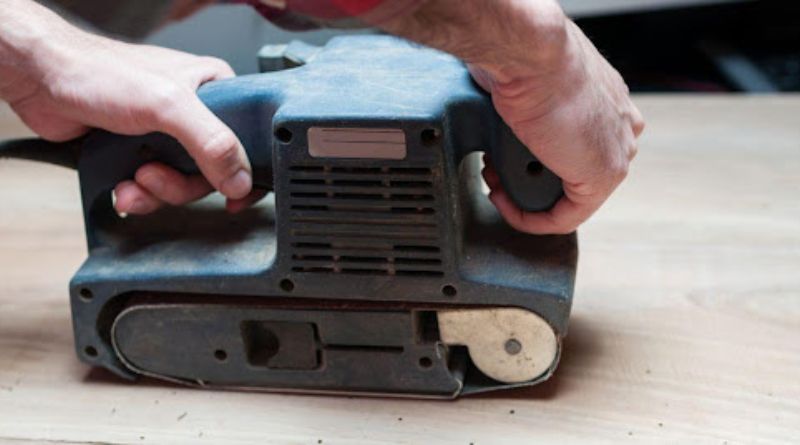How to Use a Porter Cable Belt Sander?
Belt sanders are a tool for woodworking that is designed to sand or smooth wood in preparation for it for the process of finishing. It is also employed to smooth edges or round them.
A belt sander can be quite big and if it is not used correctly, it could damage the wood, or even cause injuries. But the use of the belt sander is a fairly simple task. These are the steps to follow in order to utilize the belt sander.
How to Utilize a Belt Sander?
The first thing to do prior to beginning the sanding process is to determine which sandpaper you’ll need. Belt sanders make use of belts of sandpaper that are available in a variety of grades.
A belt sander is utilized to strip paint as well as rough sanding therefore; you’ll likely begin with a sandpaper porter cable belt sander which is coarser in grit. Choose 40 80, 90, or 100 grits to begin the process and then move on to finer grits to create more smooth surfaces.
If you’re planning to use a finish sander following the belt sander, it is unlikely that you will need to go beyond 120 grit however, if you’ll just use your belt sander you should consider increasing the grit to a minimum of 180 to ensure a smoother and more polished finish.
Set up for the work Area and the material
Belt sanders can be powerful devices. That means it’s not enough to hold the tool tightly in both hands while you work. You also must ensure that the product isn’t thrown across the space.
If you think that the clamps could interfere with your work and cause obstruction, you could put the block or fence at an end to stop the material from moving. Make sure you do not change the direction in which you’re sanding until there is an enclosure or block on the opposite side as well.
Start Sanding
Switch it on or press the trigger of the belt sander in order to turn on the motor. If you’re using a sander that is stationary make sure that the material is kept away from the belt till it’s at full speed and then slowly introduce the material to proximity to the belt and begin the sanding process.
Sand or Strip the Material
You are able to count upon the weight and force of the belt for sufficient downward force to sand however; you must keep a firm grip on the tool as you work.
Make sure that the sander is moving along the grain of the wood for a uniform appearance. Be patient and inspect your work regularly. Clear away any debris that could be blocking your view to avoid damage to your project.
Clean Up
Porter cable belt sander generates lots of dust. Some models have an integrated vacuum outlet that connects to the shop vac or workshop vacuum system that can pick up the dust and dirt after it’s been created.
Make use of a shop vac or broom to remove the sawdust and other debris. Be sure to clean the belt sander, too. If there is debris left on the belt, this could result in uneven sand patterns on any future project.
For more info please click here

